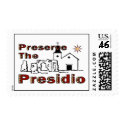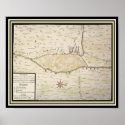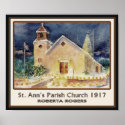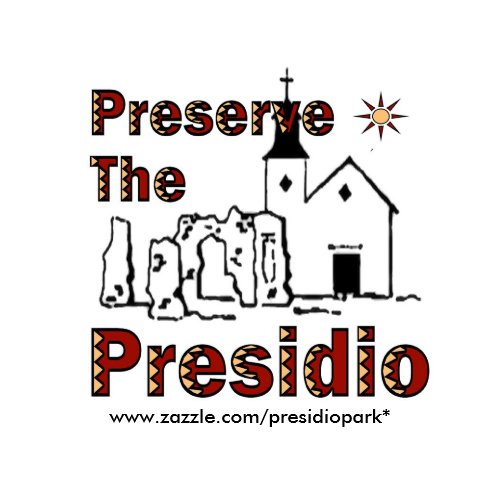Don Carlos Siguenza y Gongora-Astronomer and Intellectual
 One of the first great intellectuals produced in the Spanish viceroyalty of New Spain was Don Carlos Siguenza y Gongora. Born in Mexico City in 1645, Don Carlos was the youngest of eight children. His father was a Peninsular (a privileged residential colonist born in Spain) who had been a tutor for the royal family while living in Spain. He was also related to the famous baroque poet, Luis de Gongora. Don Carlos was a polymath and writer who held a number of colonial government and academic positions during his lifetime.
One of the first great intellectuals produced in the Spanish viceroyalty of New Spain was Don Carlos Siguenza y Gongora. Born in Mexico City in 1645, Don Carlos was the youngest of eight children. His father was a Peninsular (a privileged residential colonist born in Spain) who had been a tutor for the royal family while living in Spain. He was also related to the famous baroque poet, Luis de Gongora. Don Carlos was a polymath and writer who held a number of colonial government and academic positions during his lifetime.
Jesuit
Don Carlos took simple vows and entered into the Society of Jesuits at the age of 15, leaving (or possibly expelled) in 1667 or 1669. In 1672, he was named to the chair of mathematics and exact sciences at the University of Mexico and was ordained as a priest the following year. He was the chaplain of the Hospital del Amor de Dios (now Academia de San Carlos) from 1682 until his death.
Astronomer
In 1681, Don Carlos wrote the book Philosophical Manifest Against the Comets, citing authors like Copernicus, Galileo, Descartes, Kepler and Brahe, in an attempt to dismiss the people’s fears incited by the arrival of Kirch’s Comet, which was reputedly so brilliant that it could be viewed in the daytime. Superstitions and predictions of impending disaster that were based on astrology surrounded comets and, in this work, he tried to separate the fields of astronomy and astrology. For this he was strongly criticized by jesuit Father Eusebio Kino, himself a learned man, because the views expressed by Don Carlos contradicted the established Catholic beliefs in the Heavens. Don Carlos audaciously defended his work by publishing Libra Astronomica y Filosofica in 1690.
Cartographer
Don Carlos prepared the first-ever map of New Spain in its entirety and drew hydrologic maps of the Valley of Mexico after which King Charles II named him official geographer for the colony in 1692. As royal geographer, Don Carlos participated in the expedition to Pensacola Bay, Florida led by Andres de Pez later that same year. He mapped the area as well as the mouth of the Mississippi in 1693.
Historian
While chaplain at the hospital Amor de Dios, Don Carlos became acquainted with the last king of Texcoco, Juan de Alva Ixtlilxotchitl, who put at his disposal a rich collection of documents of his ancestors. Included in the ancestry were the historian Fernando de Alva Cortes Ixtlilxotchitl and the kings of Texcoco. Don Carlos began his study of Aztec history and Toltec writing in 1668 and devoted the later years of his life to the continuous study of Mexican history. Ixtlilxotchitl bequeathed his documents to Don Carlos upon his death. These valuable documents later became part of the Boturini Collection sometime between 1735 and 1743.
Virgin of Guadalupe Devotee
Among the Ixtlilxotchitl documents was a purported map, or codex, documenting the 1531 apparition of the Virgin Mary as Our Lady of Guadalupe. Because of the association of Don Carlos with these early documents, he is credited with playing a significant role in the development of the legend. He was a devotee of the Virgin and wrote poems to her as early as 1662. His most lasting impact on the history of the apparition, however, was his assertion that the Nican mopohua, the Nahuatl-language rendition of the narrative, was written by Antonio Valeriano and this conception persists today. He also identified Fernando Alva de Ixtlilxotchitl as the author of the Nican motecpana in response to a declaration made in Francisco de Floencia’s Polestar of Mexico, which claimed that the original Nahuatl account had been written by Jeronimo de Mendieta.
Near the end of his life, Don Carlos Siguenza y Gongora retired from the University and reentered the Jesuit Order. He died of a kidney ailment in 1700 in the Hospital del Amor de Dios in Mexico City where he had spent so much of his career. He left his body to science and his library to the Jesuit Colegio de San Pedro y San Pablo. Don Carlos led a full, rich life and left a valuable legacy of study, faith, creativity and exploration.
Information included in this article was taken from Wikipedia and an article previously published in The Villager and written by Shaw Kinsley.
Tubac Presidio Park on-line Gift Shop









